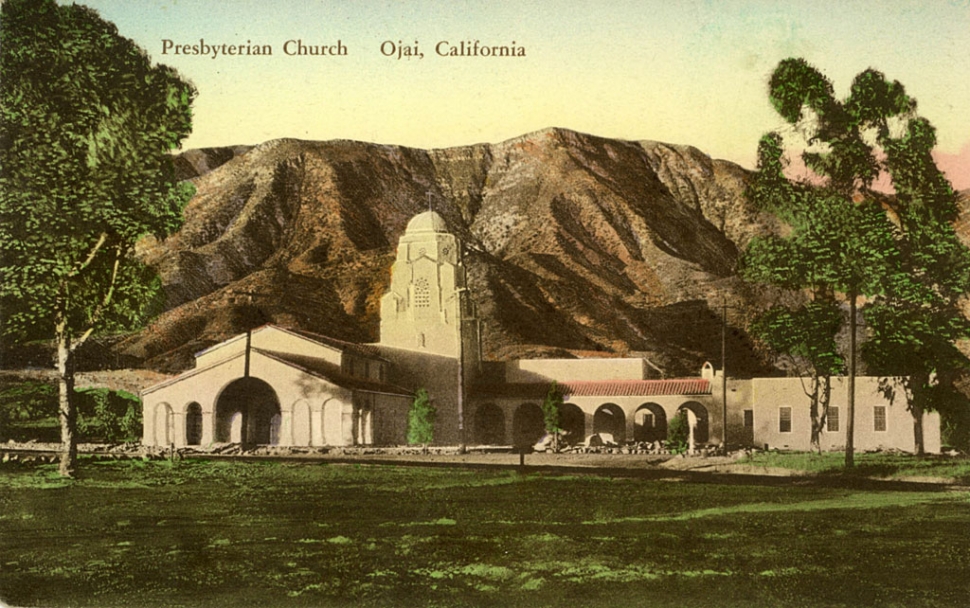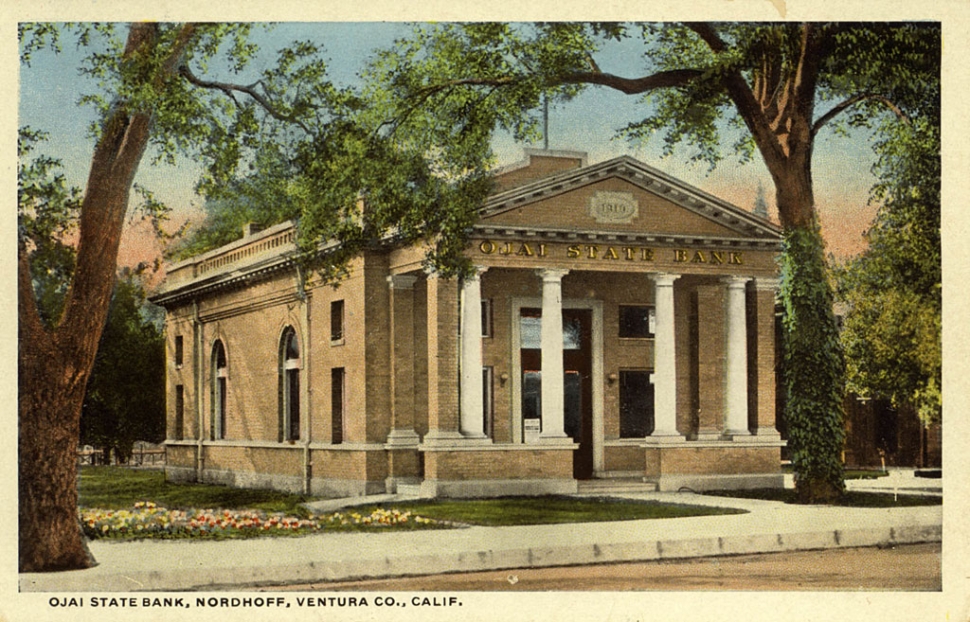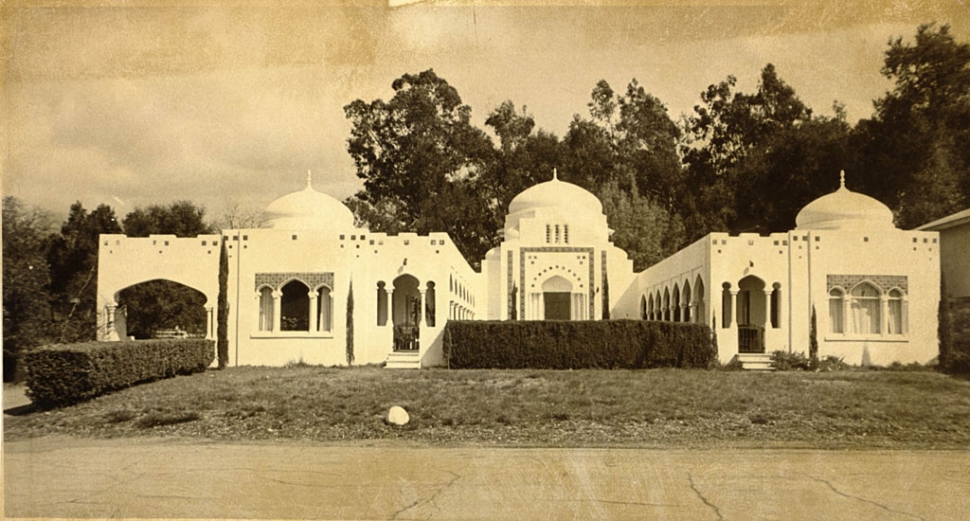|
The History of Ojai Architecture
 NEW PRESBYTERIAN CHURCH: In 1927, the Presbyterians purchased a lot on the northeast corner of Foothill Road and Aliso Street with the intention of building a larger church in the new mission revival style. They hired architect Carlton Winslow, who had worked with Bertram Goodhue on the 1915 Panama-California International Exposition in San Diego. The new Presbyterian Church was dedicated on November 23, 1930. By Anonymous — Monday, October 10th, 2011
 OJAI STATE BANK: This remarkable building, with its classical columns, was constructed in 1910 and retained that name until it was purchased by the Bank of Italy in 1927 (subsequently, the Bank of America). Even while the businesses of the town of Nordhoff had the appearance of any frontier western town, with wooden false fronts, this elegant building stood facing them across the street. It was razed in 1960.  THE PLEIADES OR OJAI TAJ MAHAL: John Roine’s “The Pleiades.” Known locally as the “Taj Mahal”, The Pleiades was created in 1930 by Edward Martin, a priest at Ojai’s Liberal Catholic Church. Martin dedicated it to Krishnamurti, who he hoped would form a bond with him over the building. Krishnamurti never responded, although he is purported to have driven by during at least one full moon. John Roine designed the building and Martin’s wife named it “The Pleiades”. The Ojai Valley Museum is hosting a Sunday afternoon PowerPoint presentation, October 16th, on The History of Ojai Architecture as part of its ongoing “Town Talks” series. The talk is dedicated to Ojai architect David Bury, who contributed his architectural talents and his leadership skills to preserving Ojai’s architectural legacy. Narrating this fascinating slide show will be Craig Walker, son of mid-century modern architect Rodney Walker and former board member of the Society of Architectural Historians/Southern California Chapter. Walker will trace the development of Ojai architecture from 1874 until the present. His talk will bring to life Ojai’s remarkable collection of artistic buildings and the architects who created them. The valley has a rich legacy of architecture that goes far beyond Mead & Requa’s masterpieces of Mission-Revival style that form the downtown business district. Many other famous architects have left their mark on Ojai, including Richard Neutra, Greene & Greene, Maynard Lyndon, Wallace Neff, George Washington Smith, Jerrold Loebl, J. Cleveland Cady, Norman Marsh, Arthur B. Benton, Robert Stacy-Judd, Paul Revere Williams, Carleton Winslow, Julia Morgan, Charles Moore, and J.R. Davidson. Talented local architects such as Zelma Wilson, Austen Pierpont, David Bury, Roy Wilson, Rodney Walker, Marc Whitman, Chalfant Head, Fred Hummel, Jr., and John Roine have contributed much to Ojai’s outstanding architecture. After the presentation, Walker will sign copies of the Ojai Valley Museum publication entitled: Ojai: A Postcard History. Walker was a co-author of the book with two other writers. Copies will be available for purchase at the museum or attendees may bring their own. The presentation will be held in the Ojai Museum Gallery from 2 - 4 pm. Admission is free for museum members, and $8 for non-members. Seating is limited, so advance reservations are advised. Call the museum at 640-1390 to reserve or for additional information. Visit the museum website at: http://www.ojaivalleymuseum.org and their new adjunct history site at www.ojaihistory.com. |
